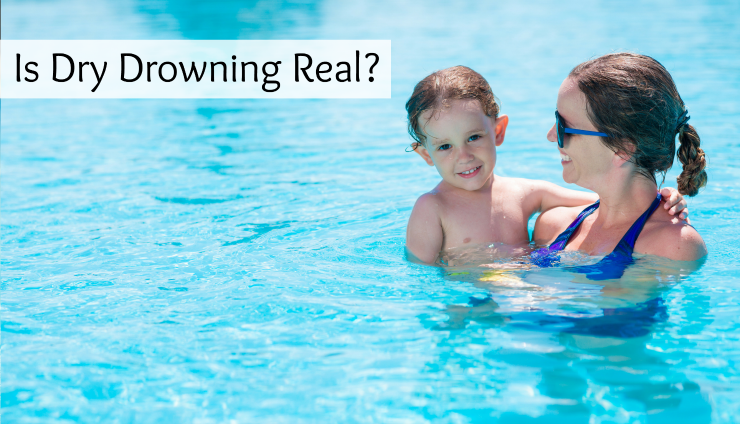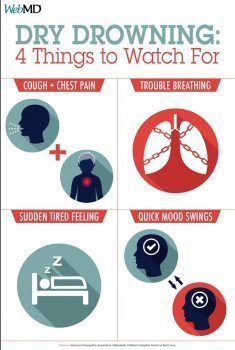
Most parents retire from lifeguard duty when their little ones hop out of the pool or make their way from the surf. Once they’re all dried off, it’s time for a snack and maybe a play in the sand. Right? Hopefully in most cases. But, dry drowning or secondary drowning, can occur up to 24 hours after your child has been for a swim.
Defining Dry Drowning
With dry drowning, water never reaches the lungs. Instead, breathing in water causes your child’s vocal cords to spasm and close up. This shuts off their airways, making it hard for them to breathe.
Defining Secondary Drowning
Secondary drowning occurs if water gets into the lungs. There, it can irritate the lining of the lungs and fluid can build up, causing a condition called pulmonary enema.
Warning Signs
There are a number of symptoms that you would notice almost instantly.
- Consistent Coughing
- Chest pain
- Trouble breathing
- Vomiting
- Feeling extremely tired

Your child may also have changes in behavior such as such as irritability or lack in concentration which could mean the brain isn’t getting enough oxygen.
What to do
If your child has any breathing problems after getting out of the water, get medical help. Although in most cases the symptoms will go away on their own, it’s important to get then checked out.
Any problems that do develop are usually treatable if you get medical care. Your job is to keep a close eye on your child for the first 24 hours after their incident in the water.
If the symptoms don’t go away, or if they get worse, take your child to the emergency room. And remember, just because your child is out of the water does not mean they are out of danger.


